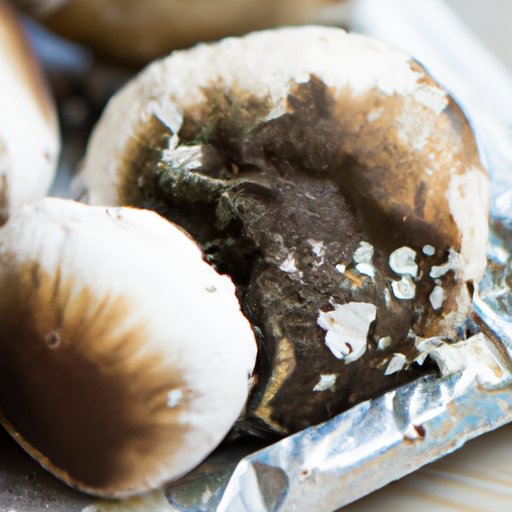Introduction
Mushrooms can be a delicious addition to many dishes, but they also have a short shelf life. Knowing how to tell if mushrooms are bad is an important skill in the kitchen.
When it comes to determining whether or not mushrooms are bad, there are a few different things to consider. The most obvious sign of spoilage is discoloration or mold growth. Additionally, you should be aware of off-odors, soft spots, darkening of the gills, and the presence of insects. Checking the expiration date and performing a taste test are also useful ways to determine if mushrooms have gone bad.
In this article, we will explore all of these methods in detail so that you can confidently identify bad mushrooms when shopping or cooking.
Visible Signs of Spoilage
The first step in determining if mushrooms are bad is to look for visible signs of spoilage. Discoloration is one of the most common indicators that mushrooms have gone bad. If your mushrooms have turned yellow, brown, or black, they should not be eaten. In some cases, you may also notice patches of white fuzz growing on the surface of the mushrooms. This is a sign of mold growth and should be avoided.
Another type of spoilage that can occur on mushrooms is sliminess. If your mushrooms feel slimy or sticky to the touch, they have likely gone bad and should be discarded.
Smell Test
If your mushrooms don’t appear to have any visible signs of spoilage, the next step is to perform a smell test. Fresh mushrooms should have a mild, earthy aroma. If your mushrooms smell sour, acidic, or like ammonia, they are likely bad and should be discarded.
If you’re still unsure, try cooking a small portion of the mushrooms and smelling them again. If the smell has changed significantly, then it’s a good indication that the mushrooms are bad.
Texture
The texture of mushrooms can also be an indicator of spoilage. If your mushrooms feel soft or mushy, they have likely gone bad. Soft spots are a sign of decay and should be avoided.
Gills
The gills of mushrooms can also be an indicator of spoilage. Fresh mushrooms typically have white gills that are free from discoloration. If your mushrooms have dark or discolored gills, they are likely bad and should not be eaten.
Insects
Insects can also be a sign that mushrooms have gone bad. If you notice any bugs or larvae in your mushrooms, they should be discarded immediately.
Expiration Date
Checking the expiration date on the packaging is another way to determine if mushrooms are bad. If the expiration date has passed, the mushrooms are likely bad and should not be eaten.
It’s also important to check the packaging for any signs of damage or leakage. If the mushrooms have been exposed to air, they are likely spoiled and should not be consumed.
Taste Test
Finally, you can perform a taste test to determine if mushrooms are bad. Before consuming a large portion of mushrooms, cook a small amount and taste it. If the mushrooms taste off or sour, they are likely bad and should not be eaten.
Conclusion
By following the tips outlined in this article, you can easily identify bad mushrooms when shopping or cooking. Be sure to look for visible signs of spoilage, such as discoloration or mold growth, and smell the mushrooms for any off odors. Additionally, check for soft spots, darkening of the gills, and the presence of insects. Finally, make sure to check the expiration date and perform a taste test before consuming the mushrooms.
By taking the time to inspect your mushrooms closely, you can ensure that they are safe to eat and enjoy.
(Note: Is this article not meeting your expectations? Do you have knowledge or insights to share? Unlock new opportunities and expand your reach by joining our authors team. Click Registration to join us and share your expertise with our readers.)
